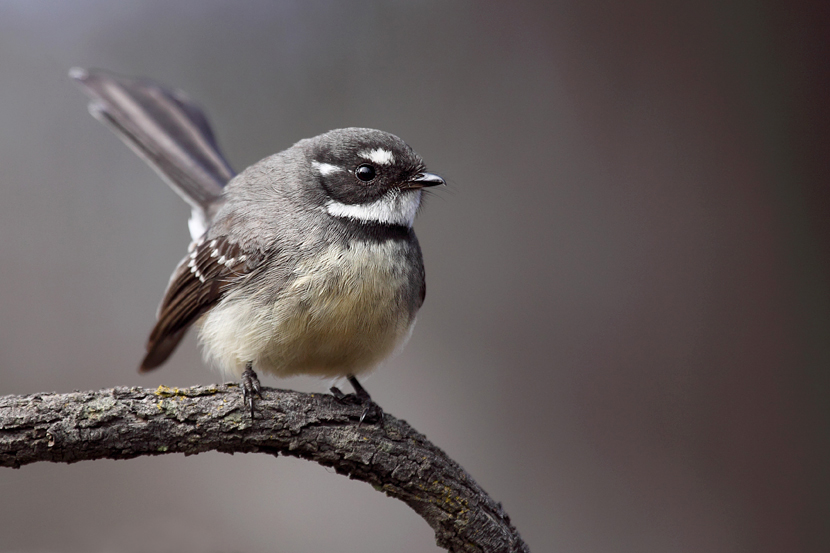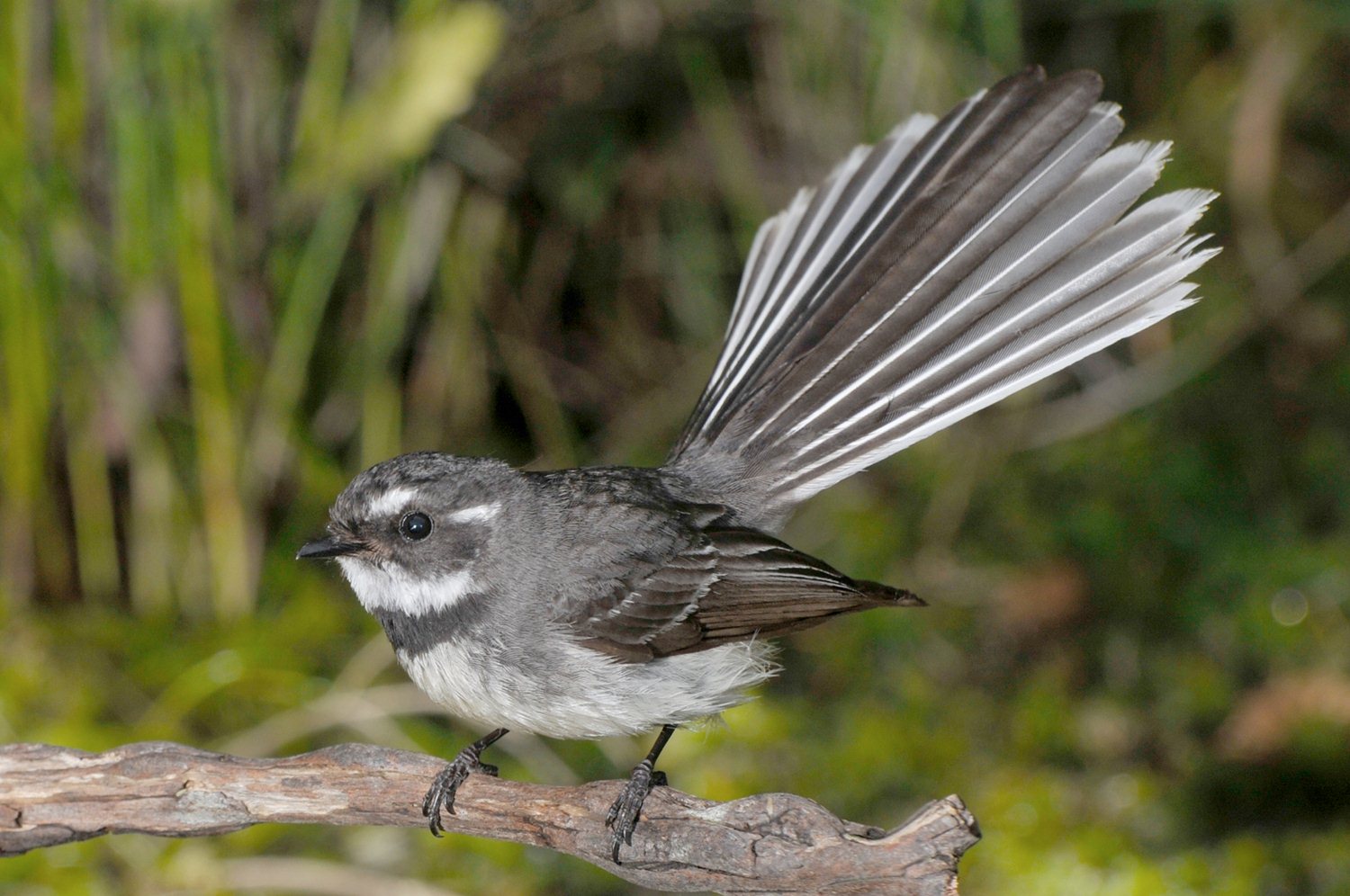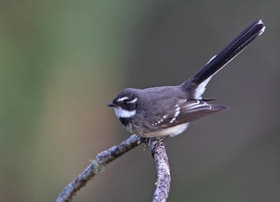
Rhipidura albiscapa
TAXONOMY
Rhipidura albiscapa Gould, 1840, Tasmania. Eight subspecies.
OTHER COMMON NAMES
English: White-shafted fantail; French: Rhipidure а collier;
German: Graufдcherschwanz; Spanish: Cola de Abanico Gris.
PHYSICAL CHARACTERISTICS
5.5–6.6 in (14.0–16.8 cm); 0.2–0.3 oz (6–9 g). Plumage color
ranges from light gray to dark brown-gray. White from chin to
top of throat; also white brow and tail tips.
DISTRIBUTION
R. a. preissi: southwestern Australia, reaching northwestern
Australia on migration; R. a. alisteri: south central, southeastern,
and east central Australia, on migration to northern Australia
and possibly New Guinea; R. a. albiscapa: Tasmania and
Bass Strait islands, southeastern Australia on migration; R. a.
keasti: northeastern Australia; R. a. albicauda: C. Australia; R. a.
pelzelni: Norfolk Island; R. a. bulgeri: New Caledonia and Lifu,
Loyalty Islands; R. a. brenchleyi: Vanuatu, Banks Islands; San
Cristobal, Solomon Islands.
HABITAT
Can be found in almost any wooded habitat, including urban
situations, rainforest, eucalypt forest and woodland, semi-arid
scrublands, mangroves, and riverine vegetation.
BEHAVIOR
Territorial; usually solitary or in pairs; often joins mixed feeding
parties. Extremely active and conspicuous; inquisitive and
confiding. Frequents all levels of foliage. Populations of southern
Australia and Tasmania are migratory, those of central
Australia are nomadic and those in northeastern Australia and
on Pacific islands are sedentary. Song is a series of highpitched
and thin but attractive notes, given in a “see-saw” cadence
and sometimes likened to a violin.
FEEDING ECOLOGY AND DIET
Eats small insects. Forages mainly by hawking on the wing in involved
intricate acrobatic chases; sometimes gleans from foliage.
REPRODUCTIVE BIOLOGY
In Australia, breeds Jul.–Jan.; produces one, two, or often three
broods in a season. The sexes share the breeding duties. The
nest is the typical fantail structure: a small cup of thin grass
bound with spider web, with pendent tail up to 6 in (15 cm)
long, placed in a fork. This is usually 6.5–16.5 ft (2–5 m),
sometimes up to 33 ft (10 m), above the ground. The eggs,
2–4 in a clutch, are cream with small light brown and underlying
pale gray spots form a wreath at the larger end. Incubation
takes 14 days, age at fledging 10–12 days.
CONSERVATION STATUS
Common in most of its range.
SIGNIFICANCE TO HUMANS
A favorite with Australian birdwatchers.
Other popular Animals
Photo Gallery of - Gray fantail




 Animalia Life
Animalia Life